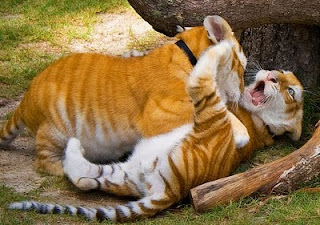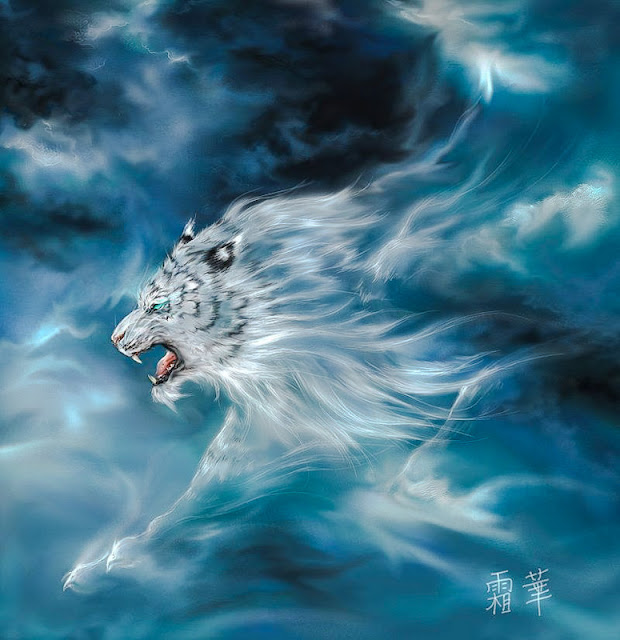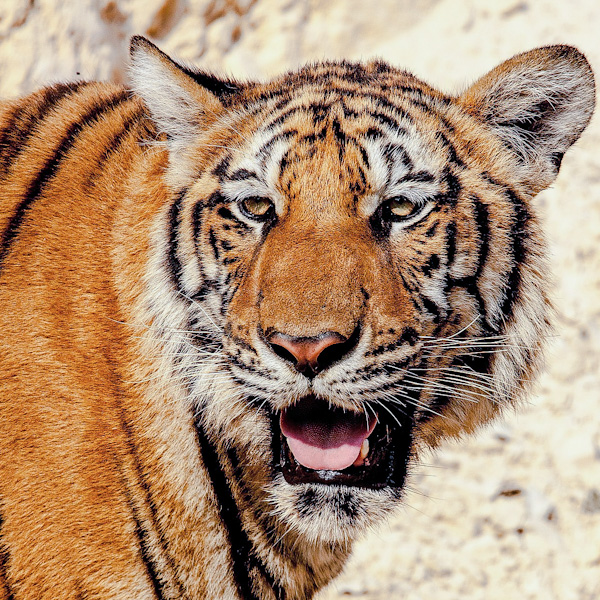Tiger Development
The development of the tiger7 is about a timetable. Things happen at a certain time. Accordingly, I have set out this section in a table for ease of reference. Male tigers have a tough time of it. Where there is a good prey base the tigress is likely to be pregnant or have young to feed as is therefore unavailable.
A tigress will scent mark to draw in a male tiger for mating. More than one can arrive resulting in potential conflict. During estrus the tigress will call more and roll and rub and behave provocatively and aggressively. She will spit at the male and strike him. The male is passive as his objective is to mate not fight.
The tigress softens and lets the male advance. She kisses him with a gentle bite. After copulation during which the male bites the scruff of the female's neck to protect himself she boxes him but there is less aggression if she knows him. Tigers mate in a very similar way to the domestic cat. See Cats Mating and Lions Mating (new window).
Cats are induced ovulators meaning ovulation occurs not to a timetable but on copulation. Before birth the mother finds a quite place such as a cave to have kittens. A tigress is under a lot of stress in terms of nutritional requirements during the time the cubs are suckling.
The period of dispersal for a male (when they become independent) is fraught with difficulty and danger. They can get into fights with resident males and be badly injured. Females not infrequently settle down into their own breeding territory near their mothers. See also Baby tigers.
Photo: John Tuggle (Flickr)
A tigress will scent mark to draw in a male tiger for mating. More than one can arrive resulting in potential conflict. During estrus the tigress will call more and roll and rub and behave provocatively and aggressively. She will spit at the male and strike him. The male is passive as his objective is to mate not fight.
The tigress softens and lets the male advance. She kisses him with a gentle bite. After copulation during which the male bites the scruff of the female's neck to protect himself she boxes him but there is less aggression if she knows him. Tigers mate in a very similar way to the domestic cat. See Cats Mating and Lions Mating (new window).
Cats are induced ovulators meaning ovulation occurs not to a timetable but on copulation. Before birth the mother finds a quite place such as a cave to have kittens. A tigress is under a lot of stress in terms of nutritional requirements during the time the cubs are suckling.
| Event | Time Frame |
| Female sexually receptive (estrus) | Once every two years possibly |
| Birth of Siberian tiger cubs in captivity | Occur mainly April - June to ensure food is more plentiful |
| When the female is sexually active estrus commences | Every 25 days approximately |
| Estrus | lasts 5 days on average |
| Pregnancy | 103 days |
| Litter size | 1 - 7 (average 2.8 in zoos) - give birth normally every 2 years |
| Cub birth weight | 785 - 1,610 grams - in 9 months the weight is 4x. |
| First month after birth | Mother stays with cubs and her range of movements are dramatically curtailed. |
| Cubs eat solid food for first time | 6 - 8 weeks of age |
| Cubs weaned | 6 months of age and male cubs weigh 90 - 105 lbs |
| Permanent canine teeth formed | 12 - 18 months of age. The cub can kill prey at this age. Hunting needs to be improved. |
| Males begin to find independence | 15 months of age |
| Males are independent and disperse to find their home range | 17 - 24 months of age - Males on average travel 33 kms in one study. Females dispersed 9.7 kms from the natal area. |
| Cub stops growing | At aged 5 |
| Tiger dies | At age of 20 - 26 years in captivity. In the wild a female might live to 15 years of age. |
The period of dispersal for a male (when they become independent) is fraught with difficulty and danger. They can get into fights with resident males and be badly injured. Females not infrequently settle down into their own breeding territory near their mothers. See also Baby tigers.
Photo: John Tuggle (Flickr)





Comments
Post a Comment
Please comment.